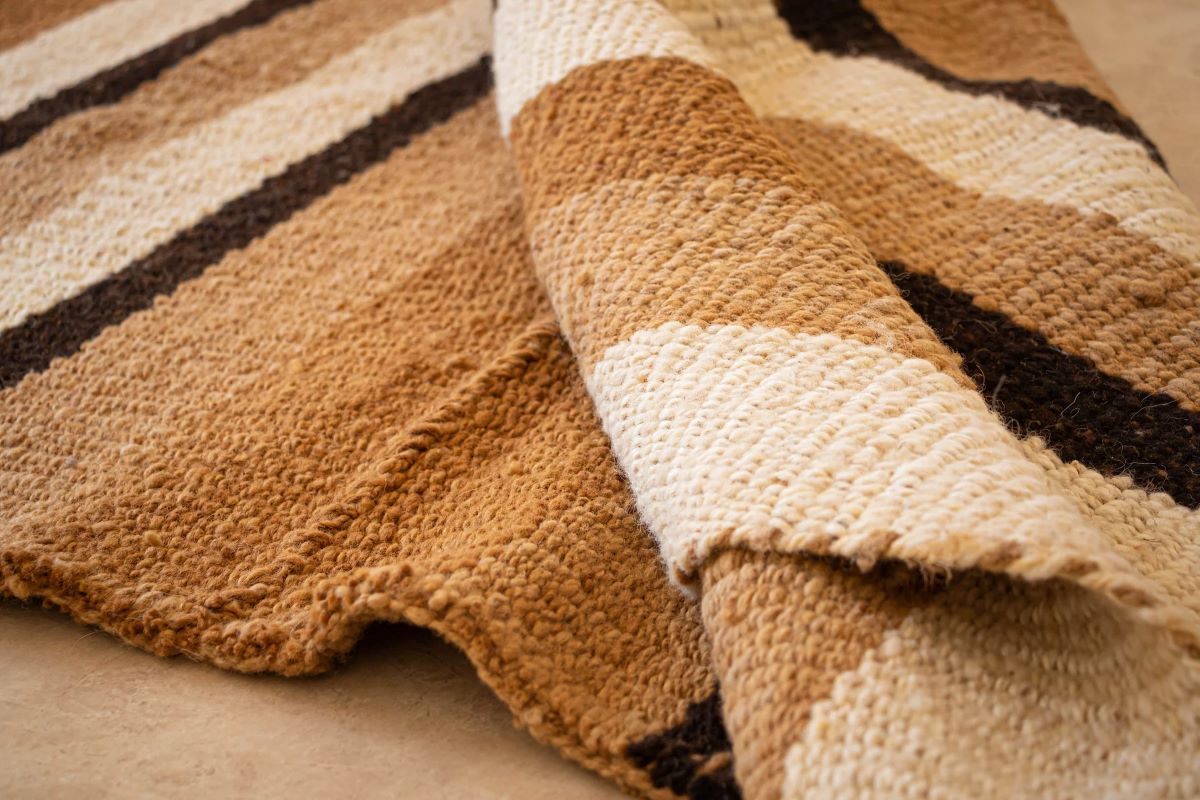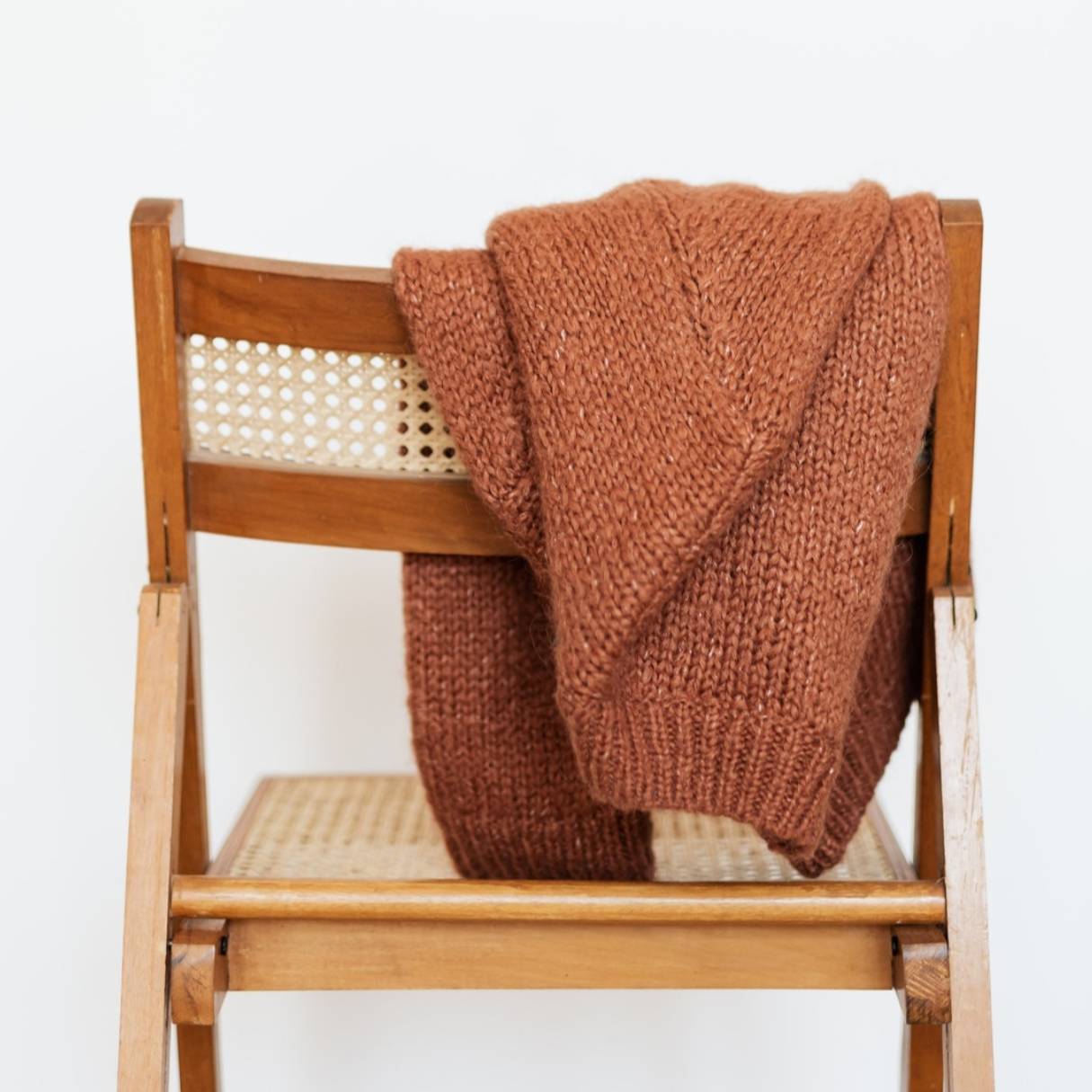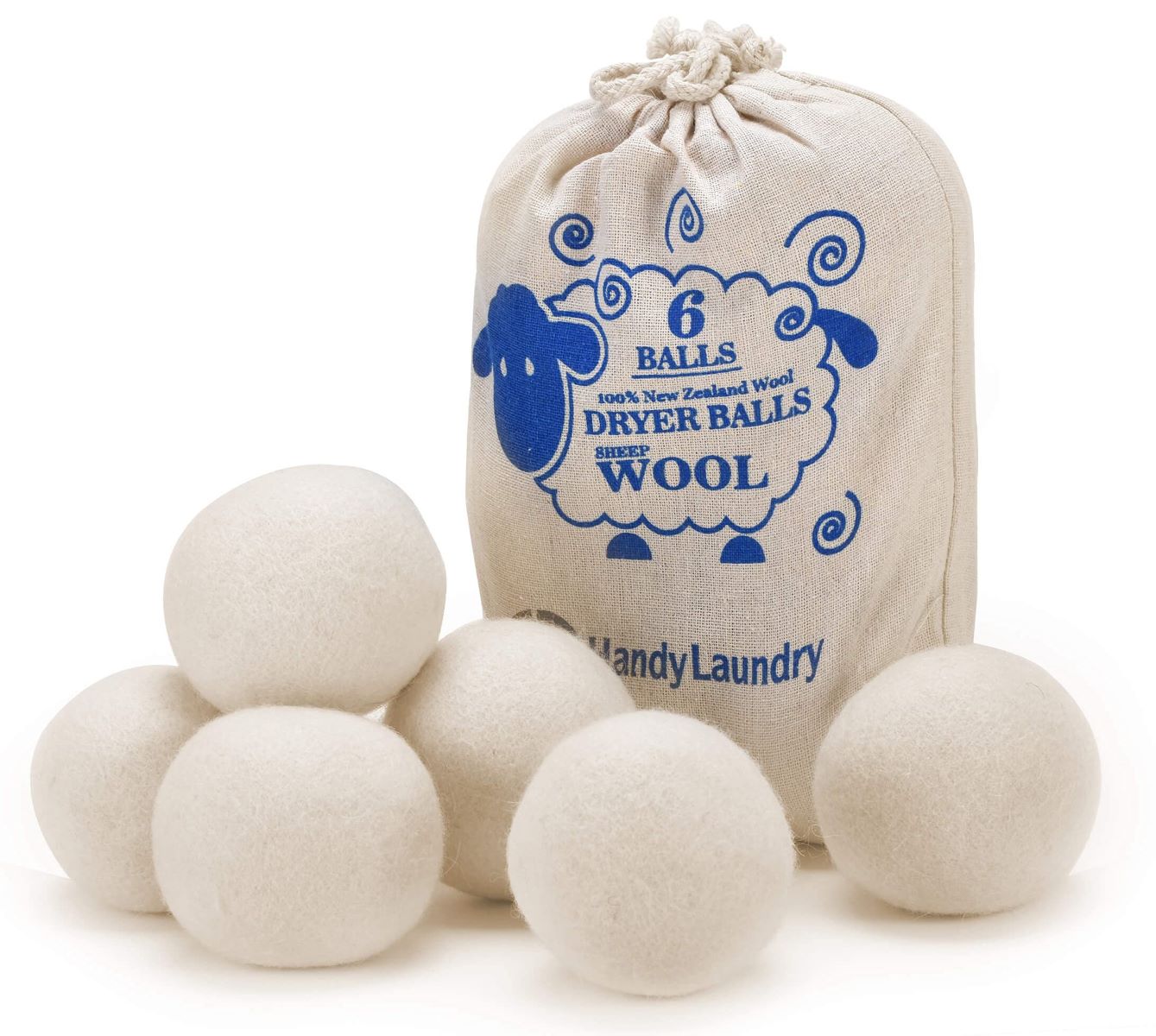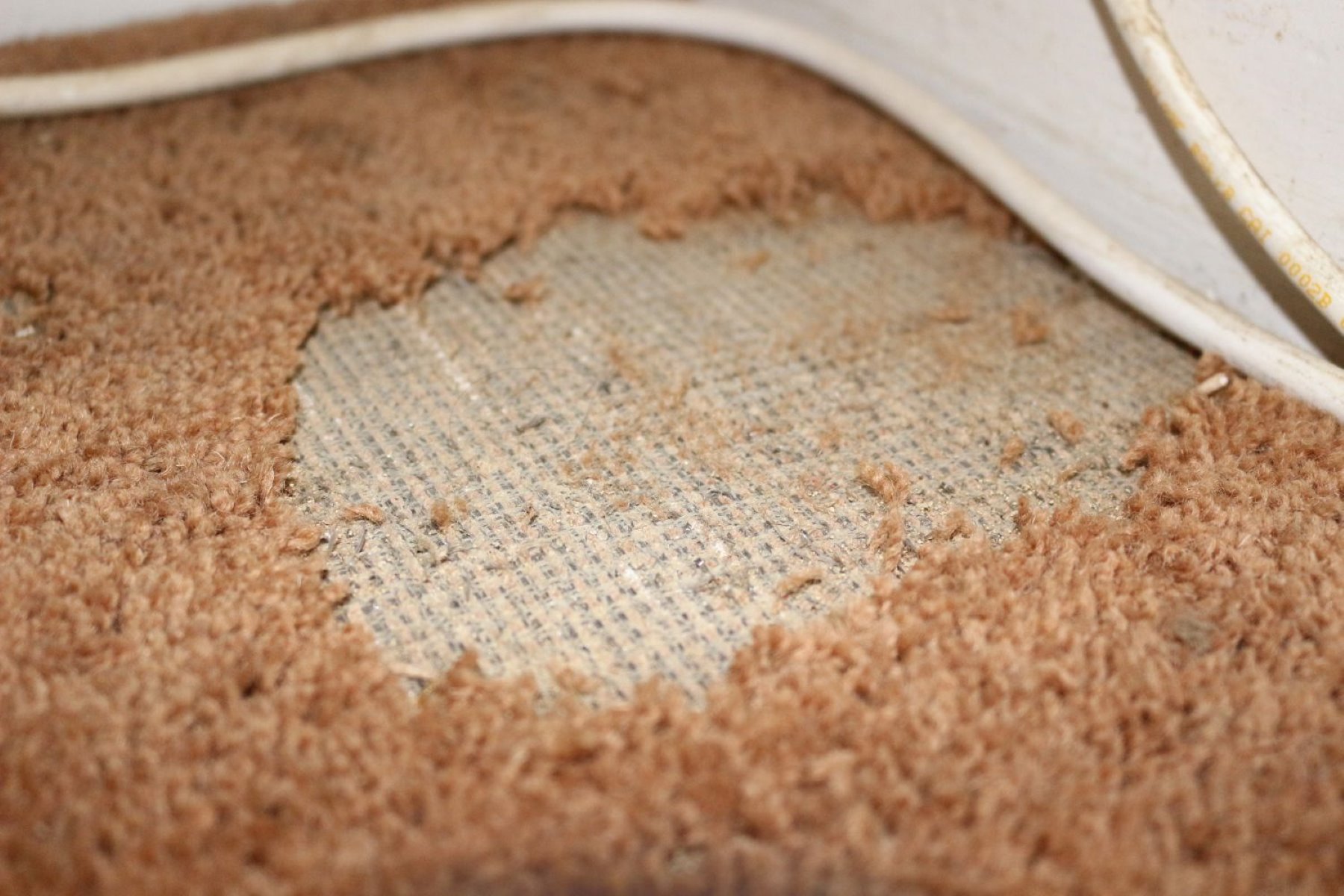

Articles
How To Store Wool
Modified: January 5, 2024
Learn the best techniques for storing wool articles to keep them in pristine condition. Discover how to protect your wool items from damage and preserve their longevity.
(Many of the links in this article redirect to a specific reviewed product. Your purchase of these products through affiliate links helps to generate commission for Storables.com, at no extra cost. Learn more)
Introduction
Wool is a versatile and luxurious natural fiber that is highly valued for its softness, warmth, and durability. From cozy sweaters to elegant blankets, wool items are treasured possessions that require proper care and storage to maintain their quality and longevity. Whether you have a collection of vintage wool garments or just a few beloved wool pieces, it’s important to know how to store wool correctly to protect them from damage.
In this article, we will explore the essential steps for storing wool items effectively. We will discuss choosing the right storage area, cleaning and preparing the wool, folding and organizing wool items, using proper containers, adding moth repellents, monitoring and maintaining the storage area, and inspecting and refreshing the wool periodically. By following these guidelines, you can ensure that your wool items remain in excellent condition and are ready to be enjoyed for years to come.
So, let’s dive in and learn how to properly store wool!
Key Takeaways:
- Properly storing wool items is crucial for preserving their quality and longevity. Choose the right storage area, clean and prepare the wool, use proper containers, and add moth repellents to protect your cherished wool items.
- Regularly monitor and maintain the storage area, inspect and refresh the wool periodically, and follow proper folding and organizing techniques to ensure your wool items remain in excellent condition for years to come.
Read more: How To Store Wool Blankets
Choosing the Right Storage Area
When it comes to storing wool items, selecting the appropriate storage area is crucial to maintain their quality. Here are some factors to consider when choosing the storage space for your wool:
- Avoid Moisture: Moisture is wool’s worst enemy as it can cause mold, mildew, and musty odors. Choose a storage area that is dry and well-ventilated to prevent any moisture buildup. Avoid basements, attics, and areas prone to dampness.
- Maintain Consistent Temperature: Fluctuations in temperature can lead to damage and deterioration of wool. Look for a storage space with a consistent temperature, ideally between 40-50°F (4-10°C). Avoid areas exposed to extreme heat or cold, such as near heating vents or windows.
- Keep Away from Direct Sunlight: Sunlight can cause wool to fade and weaken over time. Choose a storage area that is away from direct sunlight or use UV-blocking curtains or blinds to minimize exposure.
- Consider Pest Control: Wool is susceptible to damage from moths and other pests. Ensure that the storage area is pest-free or take appropriate measures to control pests, such as using repellents or traps.
- Opt for Dark, Clean, and Dust-Free Space: Dust and dirt can accumulate on wool items, leading to staining and damage. Choose an area that is clean, preferably in a dark space, to minimize dust buildup.
- Accessibility: Consider the ease of accessing your wool items when choosing a storage area. Ensure that it is convenient for you to retrieve and return items without causing unnecessary damage or hassle.
By selecting the right storage area, you can create an environment that protects your wool items from moisture, temperature fluctuations, sunlight, pests, and dust. This will significantly prolong the lifespan of your wool and ensure that they remain in pristine condition.
Cleaning and Preparing the Wool
Before storing your wool items, it’s essential to clean and prepare them properly to prevent any dirt, stains, or odors from setting in and attracting pests. Follow these steps to clean and prepare your wool:
- Check the Care Instructions: Refer to the care label on your wool items for specific cleaning instructions. Different types of wool may require different methods, so it’s important to follow the manufacturer’s recommendations.
- Spot Clean Stains: If you notice any stains on your wool items, address them before storing. Use a wool-safe stain remover or a mixture of mild detergent and water to gently spot clean the affected area. Blot the stain rather than rubbing to avoid spreading it further.
- Hand Wash or Dry Clean: In general, it’s best to hand wash wool items to maintain their shape and quality. Fill a basin with lukewarm water and use a mild detergent made for wool. Gently agitate the garment, then rinse thoroughly. Be careful not to wring or twist the wool, as this can cause it to stretch or lose its shape. Alternatively, you can take delicate or heavily soiled wool items to a professional dry cleaner.
- Air Dry Completely: After washing, lay the wool items flat on a clean towel or drying rack to air dry completely. Avoid hanging them, as this can stretch the fabric. Make sure they are fully dry before proceeding to the next step.
- Remove Lint and Pills: Use a lint roller or a soft brush to remove any lint or pills that may have formed on the wool. Gently brush in one direction to avoid damaging the fabric.
- Freshen Up: To eliminate any lingering odors, you can lightly spritz your wool items with a fabric freshener or use natural deodorizers like baking soda. Allow them to air out before storing.
By cleaning and preparing your wool items properly, you can ensure that they are free from dirt, stains, and odors. This not only helps preserve the quality of the wool but also prevents attracting pests during storage.
Folding and Organizing Wool Items
Properly folding and organizing your wool items is essential to prevent wrinkling, creasing, and unnecessary stress on the fabric. Here are some tips to help you fold and organize your wool items effectively:
- Use Acid-Free Tissue Paper: Start by placing acid-free tissue paper between the layers of your folded wool items. This helps to prevent any color transfer and provides additional protection.
- Fold Carefully: Lay the wool item flat on a clean surface and smooth out any wrinkles gently. Fold it neatly in the desired shape, such as a rectangle or square, avoiding any sharp creases that can cause permanent lines.
- Stack in Order of Use: Consider the frequency of use when organizing your wool items. Place the most commonly worn or used items on top for easy accessibility.
- Separate by Type: If you have a variety of wool items, consider separating them by type. For example, keep sweaters together and blankets in a separate stack. This makes it easier to locate specific items without disrupting the rest.
- Label Containers: If you’re using containers or bins to store your wool items, label them accordingly. This helps to identify the contents without having to open each container, saving time and effort.
- Utilize Drawer Dividers: If you’re storing your wool items in drawers, consider using dividers to separate different categories or sizes. This keeps the items neatly organized and prevents them from tumbling over each other.
- Avoid Overfilling: Make sure not to overcrowd the storage space with too many wool items. Overfilling can lead to wrinkling, misshaping, and difficulty in retrieving items without causing damage.
By folding and organizing your wool items with care, you can maintain their shape and prevent any unnecessary stress on the fabric. This ensures that your wool remains in excellent condition and ready to be used whenever you need them.
Using Proper Containers
Choosing the right containers for storing your wool items is crucial in protecting them from dust, pests, and damage. Here are some tips to help you select and use proper containers for your wool:
- Avoid Plastic Bags: Plastic bags create a humid environment that can promote mold and mildew growth. Instead, opt for breathable storage containers or fabric bags that allow air circulation.
- Opt for Acid-Free Boxes: Acid-free boxes are specially designed to ensure the preservation of delicate fabrics like wool. These boxes help prevent yellowing and discoloration over time.
- Consider Vacuum-Sealed Bags: Vacuum-sealed bags can be a good option for long-term storage of wool items. These bags help reduce the amount of air and moisture that can come into contact with the wool, minimizing the risk of damage.
- Size Matters: Choose containers that are appropriately sized for your wool items. Avoid using containers that are too small, as they can cause unnecessary compression, leading to wrinkling or misshaping of the fabric.
- Keep Containers Clean: Before using any containers, ensure they are clean and free from dirt, dust, and other contaminants. Wipe down the containers with a clean cloth or use a gentle cleaner to remove any residue.
- Layer with Acid-Free Tissue: Layer your folded wool items with acid-free tissue paper to provide an extra layer of protection. This prevents any friction or color transfer between garments.
- Label Containers: To easily locate specific wool items, label each container with a description or category. This eliminates the need to open multiple containers and saves time when you’re looking for a particular item.
By using proper containers, you can safeguard your wool items from dust, pests, and the damaging effects of improper storage. Remember to choose containers that are breathable, acid-free, and appropriately sized to ensure the best conditions for your wool during storage.
Store wool in a cool, dry place to prevent mold and mildew. Avoid storing in plastic bags, as wool needs to breathe. Use acid-free tissue paper to protect from moths and pests.
Read more: How To Store A Wool Blanket
Adding Moth Repellents
Moths can be a common concern when it comes to storing wool items. These pests are attracted to natural fibers like wool and can cause significant damage if left unchecked. To protect your wool from moth infestations, consider adding moth repellents to your storage area. Here are some effective methods:
- Cedar Products: Cedar is a natural insect repellent that is effective against moths. Use cedar balls, blocks, or hangers in your storage area to help deter moths. The aromatic scent of cedar confuses and repels moths, keeping them away from your precious wool items.
- Lavender: Moths dislike the strong scent of lavender, making it an excellent natural repellent. Place dried lavender sachets or cotton balls soaked in lavender oil in your storage containers or hang them around the storage area. Not only will it repel moths, but it will also leave your wool items smelling fresh and pleasant.
- Mothballs: Mothballs contain chemicals that emit a strong odor that moths find repulsive. However, be cautious when using mothballs as they contain toxic substances. If you choose to use mothballs, place them in a sealed bag or container, away from direct contact with your wool items.
- Herbs and Spices: Certain herbs and spices have natural insect-repelling properties. Create a sachet using a mix of dried rosemary, mint, cloves, or bay leaves and place them in your storage containers. Not only will they help repel moths but they will add a pleasant scent to your wool items.
- Regular Air Circulation: Moths prefer still, stagnant air. To discourage them, ensure that your storage area is well-ventilated with regular air circulation. Open the windows occasionally, if possible, to let fresh air in.
It’s important to note that moth repellents should be used as a preventive measure and not when moths are already present. Regularly inspect your wool items for signs of moth activity, such as holes or webbing. If you detect an infestation, take immediate action to address the issue.
By incorporating moth repellents into your storage area, you can significantly reduce the risk of moth damage to your cherished wool items. A combination of natural repellents and proper ventilation will help create an environment that moths find unappealing, keeping your wool items safe and protected.
Monitoring and Maintaining the Storage Area
Proper monitoring and maintenance of the storage area are essential in preserving the quality of your wool items. By regularly checking and taking preventive measures, you can ensure that your wool remains in optimal condition. Here are some steps for monitoring and maintaining the storage area:
- Regular Inspections: Conduct periodic inspections of your stored wool items to check for any signs of damage, stains, or pest infestation. Look for holes, discoloration, or webbing, which can indicate the presence of moths or other pests.
- Remove Dust: Dust can accumulate on wool items over time, so it’s important to remove it regularly. Use a soft-bristle brush or a lint roller to gently remove any dust or particles from the surface of the wool items.
- Check for Moisture: Monitor the storage area regularly for any signs of moisture or humidity. Look for condensation on windows or walls and address any leaks or water damage immediately. Maintain a dry environment to prevent mold and mildew growth.
- Reapply Moth Repellents: Over time, the scent of moth repellents may fade. Therefore, it’s important to replenish them periodically. Refresh cedar products, lavender sachets, or other natural repellents to ensure their effectiveness in keeping moths at bay.
- Rotate Wool Items: To avoid any potential damage from prolonged storage in one position, periodically rotate your wool items. This will help prevent creasing and maintain the shape of the fabric.
- Address Pest Infestations: If you discover signs of pests such as moths or beetles, take immediate action to address the infestation. Consult a professional pest control specialist to help eradicate pests and prevent further damage to your wool items.
- Maintain a Clean Environment: Regularly clean and dust the storage area to prevent dirt and debris from settling on your wool items. Keep the area free from clutter to allow for proper airflow and ventilation.
By monitoring and maintaining the storage area, you can ensure that your wool items are kept in a clean, well-ventilated, and pest-free environment. Regular inspections and preventive measures will help preserve the quality of your wool and extend its lifespan.
Inspecting and Refreshing the Wool Periodically
Periodic inspections and refreshing of your wool items are crucial to ensure their continued quality and longevity. By following these steps, you can keep your wool in optimal condition:
- Inspect for Damage: Regularly examine your wool items for any signs of damage, such as holes, snags, or loose threads. Identifying issues early on allows you to address them promptly and prevent further damage.
- Refresh the Wool: Wool garments and accessories can sometimes develop a slightly stale or musty odor, especially if stored for a long period. To refresh the wool, hang it in an open area with good airflow or place it outside briefly on a dry, sunny day. This helps remove any lingering odors and freshens up the wool.
- Air Out Blankets and Rugs: If you have wool blankets or rugs, give them a good shake and hang them outside on a clothesline periodically. This will help remove any dust or odors that may have accumulated over time.
- Gently Brush the Wool: Use a soft-bristle brush or a clothes brush to gently brush your wool items. This helps remove any surface lint, dust, or pet hair. Brushing also helps maintain the appearance and texture of the wool.
- Consider Professional Cleaning: Depending on the type and condition of your wool items, it may be beneficial to have them professionally cleaned. Professional cleaning can help remove tough stains, revitalize the fibers, and ensure a thorough clean without risking damage to the wool.
- Store in Different Positions: When refreshing wool items, try changing their position or folding them differently. This helps prevent creases or permanent lines from forming in the fabric.
- Reevaluate Storage Conditions: Use the opportunity of inspecting and refreshing your wool items to reassess the storage area. Ensure that the conditions are still optimal, with proper ventilation, absence of pests, and appropriate temperature and humidity levels.
By inspecting and refreshing your wool items periodically, you can maintain their freshness, appearance, and overall quality. This helps extend their lifespan and ensures that you can continue to enjoy their warmth and beauty for years to come.
Conclusion
Properly storing wool items is essential to preserve their quality, appearance, and longevity. By following the steps outlined in this article, you can ensure that your wool items remain in excellent condition and are ready to be used whenever you need them.
Choosing the right storage area is the first important step. Avoid areas with excess moisture, extreme temperatures, or direct sunlight. Keep your wool items in a dry, well-ventilated, and dark space to protect them from damage.
Cleaning and preparing the wool before storage is crucial. Follow the care instructions, spot clean stains, hand wash or dry clean as needed, and ensure that the items are completely dry before storing. Removing lint and pills will help keep the wool looking its best.
Folding and organizing your wool items with care will prevent wrinkles and maintain their shape. Use acid-free tissue paper to separate layers and stack the items in order of use. Label containers or use drawer dividers to keep everything organized and easily accessible.
Choosing proper containers is essential to protect your wool from dust, pests, and damage. Avoid plastic bags and opt for breathable storage containers or fabric bags. Acid-free boxes or vacuum-sealed bags are excellent options to prevent any harmful effects.
Moths can wreak havoc on wool, so take preventive measures by using moth repellents such as cedar products, lavender sachets, mothballs (with caution), or herbs and spices known to repel insects. Regular monitoring and maintenance of the storage area will help ensure a clean and pest-free environment for your wool items.
Lastly, periodically inspect and refresh your wool items. Check for damage, refresh the wool by airing it out, gently brush the fibers, and consider professional cleaning if necessary. This will help prolong the lifespan of your wool and keep it looking and smelling fresh.
By following these guidelines, you can ensure that your wool items remain in pristine condition and are available for your enjoyment whenever you need them. Proper storage and care will preserve the beauty, softness, and warmth of your wool for years to come.
Frequently Asked Questions about How To Store Wool
Was this page helpful?
At Storables.com, we guarantee accurate and reliable information. Our content, validated by Expert Board Contributors, is crafted following stringent Editorial Policies. We're committed to providing you with well-researched, expert-backed insights for all your informational needs.















0 thoughts on “How To Store Wool”